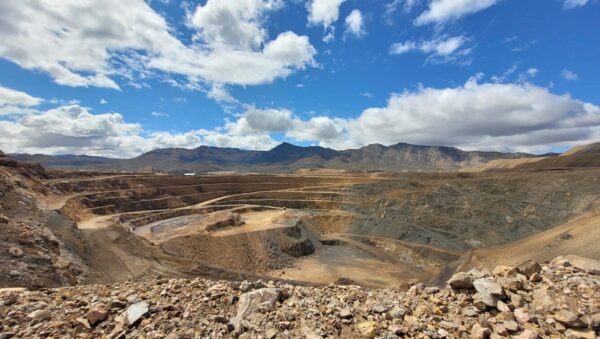 The Mountain Pass Rare Earth Mine in California, the only REEs mine and processing facility in the United States. (Credit: Travis Morton, USGS Intern)
The Mountain Pass Rare Earth Mine in California, the only REEs mine and processing facility in the United States. (Credit: Travis Morton, USGS Intern)
A New Era for Rare Earths: The U.S. Should Make Long-Term Investments in Global Supply Chain Resilience
Since taking office in January, the Trump administration has focused heavily on rare earth elements (REEs), pushing for increased domestic production through an executive order, negotiating a deal with Ukraine, and expressing interest in Greenland partly for its mineral deposits. These efforts reflect the desire to reduce the United States’ longstanding dependence on China to mine and process these minerals, which are integral to many modern technologies. However, since securing new sources is urgent, the United States should prioritize building strategic partnerships and fostering economic development with other countries that have known vast rare earth mineral deposits.
Rare earths are a group of 17 elements that consist of scandium, yttrium, and lanthanides and are typically categorized as either “light” or “heavy” based on their atomic number. Despite their name, REEs are not all that “rare” in their crustal abundance, but they rarely exist in “economic concentrations,” and isolating the individual elements is a technically complex and expensive process, often generating substantial waste with a significant environmental toll. Still, these are vital for producing everyday technologies, such as televisions, computers, phones, cars, light bulbs, magnets, and batteries, and will only become increasingly important for renewable energy.
The United States also has great interest in REEs for their use in defense technology. For example, it takes approximately 920 pounds of REEs to build a single F-35 Lightning fighter. These elements are also used in many other defense technologies: missiles, lasers, tanks, communication systems, etc. After the Cold War, the United States slowed down its own REEs mining production due to justifiable environmental concerns, while operations abroad began to produce at much lower costs. This shift evolved into a global dependence on China’s critical mineral supply chain, which is estimated to produce 60% of the world’s rare earths and process nearly 90%, giving it a near monopoly on the market. To counteract this, the Trump administration should cultivate relations with other countries known to possess significant deposits. This strategy, combined with scaling up domestic endeavors, would likely yield more sustainable and secure results.
Identified deposits in Vietnam, Brazil, India, and Australia hold about half the global supply of REEs, while the United States and Greenland each account for just 1.3%. The remaining countries outside the eleven with the highest known reserves contribute only 0.2% of the world’s supply altogether. While Vietnam and Brazil have the highest known reserves behind China, respectively 18.9% and 18.1% of global supply, their mining production remains among the lowest. Although their potential has been recognized—Brazil could develop up to three additional mines beyond Serra Verde by 2030, and Vietnam has expressed interest in partnering to advance its underdeveloped industry—progress has been slow.
Efforts to jumpstart mining industries in rare earth-rich countries have been hindered primarily by market price volatility, driven by low demand and a sluggish global economy, factors that have reinforced China’s dominance. Moreover, many Western companies are still struggling to improve the challenging process of refining REEs to make it less environmentally harmful.
To effectively reduce China’s control and strengthen the supply chain, the U.S. could pursue a strategy that considers multiple statecraft perspectives, and measurable investment in any one of these countries would likely have a significant return:
- The U.S. government could offer greater economic development aid and technical assistance to further develop the capacity of the mining industry in India, Brazil, and Vietnam. The International Technical Assistance Program run by the U.S. Department of the Interior can be utilized since DOI-ITAP can specialize in mining expertise.
- Establishing strategic partnerships through bilateral and multilateral trade agreements to build stronger trade ties between the U.S. and REEs-rich countries. Ally-shoring would be essential to reworking the current supply chain vulnerability to create greater diversified resilience for the global market.
- Encouraging the development of REEs recycling initiatives from industrial and electronic waste domestically and abroad could also help promote circular economies, which would assist with well-grounded sustainability concerns.
There are many diplomatic opportunities for the United States to reduce reliance on China’s REEs production, and adopting a broader, more strategic approach would likely grant a more resilient solution. It will take a multi-pronged framework focused on technical assistance, economic development, and investment in regenerative practices in countries such as Vietnam, Brazil, India, and Australia for long-term gains in a more globally robust supply chain. These combined efforts enhance national security and economic independence, as well as position the U.S. to be a key player in the future of critical mineral development and sustainability.






